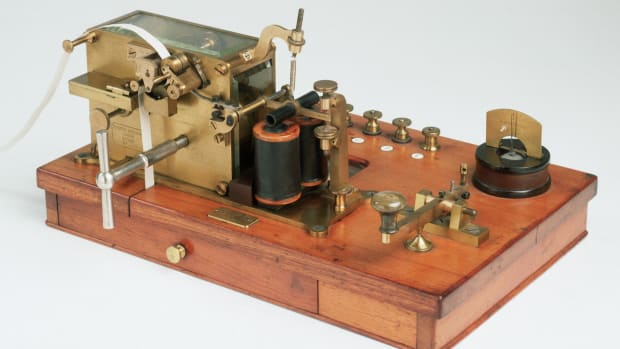
The answer may surprise you.
At the end of the nineteenth century, radio was a popular topic of public discourse, a scientific marvel that had captured the popular imagination. However, if you asked the average person what they considered to be the “inventor” of the radio, they’d have said, Guglielmo Marconi. Marconi was a fascinating figure: an Italian scientist who emigrated to England and ultimately brought his wireless telegraphy invention to America in 1919. But far from being a self-made genius, Marconi was a masterful salesman who also had extremely good timing.
But the truth is, Guglielmo Marconi didn’t actually “invent the radio.” Ferdinand Braun, a German scientist considered to be one of the fathers of radio technology, had his own version of the invention years earlier than Marconi, while Nikola Tesla had many of his own research and insights on radio as well. In fact, Marconi himself admitted to having a co-inventor in the form of a fellow Italian, and he credited the work of yet another Italian—Guglielmo Spinti—with helping him to develop his early wireless telegraphy devices. “I would never have succeeded without the work of these two men,” Marconi said in 1895.
It’s easy to see how these stories get twisted into the Marconi mythos. During the first half of the twentieth century, Marconi was seen as the textbook example of an inventor who brought new technology to market years ahead of his rivals—a story that resonated with countless Americans: the self-made man who overcame all odds to become successful in America. Just as importantly, “Marconi” was easier to pronounce than “Braun” or “Tesla.
Although it’s what people think of when they think of “the radio” today, the invention of the commercial radio didn’t happen on a single day in a single lab. Instead, it was created over the course of several years by a number of people in a handful of different locations.
Important Radio Facts
Although many people have contributed to the development of commercial radio, and radio history is full of notable events, here are some of the most important radio facts.
- 1300 BC -The first hints of real communication over distances occurred in ancient China. In 1300 BC, Shang Dynasty soldiers would broadcast orders over drums and horns to other parts of their military. The most notable advancement in ancient China in terms of communication was the invention of the Morse Code by a Chinese engineer, Zhang Heng. This system was used as two tapping sequences (a dot and a dash) that were translated via repeated pages.
- In 1832, British scientist James Prescott Joule discovered that radio waves can be created by sending electricity through a wire.
- In 1864, German physicist Heinrich Hertz improved on this experiment by using a one-kilometer long wire. This led other scientists to believe that Hertz was experimenting with a form of wireless communication and sparked more research in the field.
- In 1895, Italian inventor Guglielmo Marconi successfully demonstrated his wireless telegraph and patented a radio transmitter. In 1899, he sent a message across the Atlantic Ocean to Newfoundland and Nova Scotia. This was the first transatlantic radio transmission.
- In 1922, Edwin Armstrong invented frequency modulation (FM) transmissions for radio. This technology allows for better sound quality and stronger signals.
- On November 2, 1904, Reginald Fessenden began transmitting the human voice by radio. In the next year, ship-to-shore communication was established on a regular basis.
- The first broadcast of stock prices took place in 1915. In 1919 a regular schedule of radio broadcasts began in the United States, and in 1920 KDKA in Pittsburgh was granted a license to broadcast weather reports and special events. Radio technology was much slower to develop in Europe than it was in the United States because of World War I, which largely halted progress for about 10 years. By the end of WWI, though, radio was becoming popular in Britain, France, and Germany. The early days of radio were mainly filled with music and variety shows. Then, as now, children were one of the main demographics attracted to the radio. Early children’s programs included “Uncle Jim’s Radio School” and “Uncle Don’s School of Science.” Later came “Romper Room” and “Captain Kangaroo.” The comedy show “Amos ‘n Andy” was a success from 1928 to 1960.
- In 1945, the BBC broadcast “The Goon Show,” which is credited with introducing the term “Goon” into the English language. Goons were originally British music hall entertainers of the mid-1800s whose acts often included blackface and offensive racial stereotypes. The term is said to have derived from a South African name for a clumsy man or booby.
- At the turn of the 20th century, when commercial radio was born, most radios were homemade. In fact, the first radio system to be patented was made by Lee de Forest in 1907. However, it was not until after World War I that radios were mass-produced for use in homes and automobiles.
- In 1920, a Boston shop sold the first commercial radio receiver to be used in a car. Fresh out of the box, this new device sold for $45, with a whopping $30 of that cost going towards a high-end speaker — quite a bit more than today’s car stereos!
- During World War II, ham or amateur radio operators helped to fill the void created when many commercial stations went off the air due to wartime restrictions. Many amateur radio operators volunteered their time so citizens would have information about war activities and preparedness. Some operators even took messages for soldiers that we’re unable to send mail due to military censorship.
